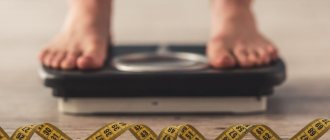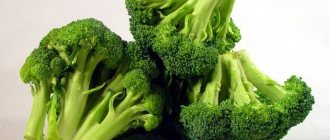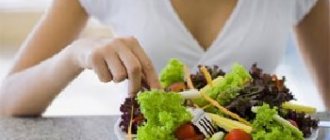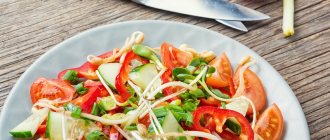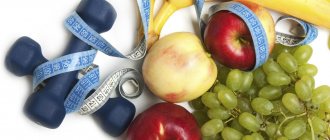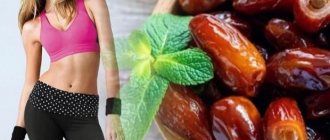What is the essence of a gentle diet?
The nutrition system, known today as the “ShchD Diet,” was developed by Soviet doctors, in particular by the famous gastroenterologist Dr. Pevzner. The first domestic nutritionist became a victim of repression in the middle of the last century, and his clinic was disbanded. However, the fruits of the work of the author of the technique were not lost and, after the debunking of the cult of personality, they went beyond the hospital walls.
Therapeutic nutrition according to Pevzner exists today in several versions, each of which is given the name “table” and a serial number for ease of classification. Depending on the presence of certain diseases and the characteristics of the patient’s body, his optimal diet is compiled.
All types of gentle diets have simple requirements in common:
- refusal of processed foods and fast food;
- eating easy-to-digest foods that are crushed, boiled or steamed as much as possible;
- avoiding excessively hot and excessively cold foods;
- reducing the consumption of salt, spices and flavorings;
- complete exclusion of products that stimulate the central nervous system (alcohol, energy drinks, coffee, strong tea);
- ban on flour and confectionery products;
- fractional meals 5-7 times a day.
In order for food to truly become medicine, it is necessary to understand that fasting does not solve health problems and excess weight. The essence of a gentle diet is to create an individual menu with minimal stress on the gastrointestinal tract and the body as a whole.
Therapeutic diet for gastritis with low acidity/h2>
The goal of the diet is not so much to cut down on your diet, but to learn how to eat properly. People with low acidity are usually characterized by rapid absorption of food in large doses, lack of preparation for the eating process, and poor chewing. With low acidity of gastric juice, the main problem is an insufficient amount of acid secreted by the stomach, which makes digestion difficult.
Should be excluded: lamb, goose, duck meat; milk and dairy products; coffee and caffeinated drinks; chocolate and sweets; baked goods, baked goods, bran bread; fried, fatty, salty, smoked and spicy foods; alcohol and fermentation products; spices.
Recommended for consumption: fermented milk products; non-fibrous fruits and vegetables; mineral water; broccoli, cauliflower, carrots; greenery.
Recommendations for eating: learn to chew food for a long time, make sure that not a single piece enters the esophagus unchewed.
A meal, even if it is a light snack, should last at least 30-40 minutes. Eat in a calm environment, devote time to this event, exclude “eating on the go” and fast food. Watch your portion sizes - the more time you spend eating, the faster you get full. The normal nutritional schedule for people with low gastric acidity: 5-6 meals a day, in small portions. Try to “work up an appetite”: take part in setting the table and preparing food, look at the dish you are about to eat, inhale the smells - all these actions contribute to the production of gastric juice. #treatment #reception problems with the gastrointestinal tract
Therapeutic gentle diet
Dr. Pevzner’s technique is used by medical and health institutions during the postoperative period, to treat acute diseases and alleviate chronic ones.
The general requirements for all types of gentle diets are the same, however, the daily menu of patients can differ significantly depending on the diagnosis, the severity of the disease and its type (acute or chronic). The duration of the diet and the energy value of the diet also varies and is approved by the attending physician based on the available indications.
| Indications | Nutritional Features | Calorie content of the daily menu |
| Stomach ulcer or exacerbation of peptic ulcer, chronic gastritis with high acidity | Moderate portions, excluding foods that increase gastric secretion; reducing the load on the intestines and the likelihood of mechanical damage to the walls of the gastrointestinal tract; food that is as finely chopped as possible and has undergone heat treatment | 2300-2600 kcal |
| Chronic gastritis with low acidity or colitis, postoperative period and recovery from infectious diseases | Fractional meals excluding sauces, spices and other irritants; food that increases secretion and restores the microflora of the gastrointestinal tract; products are crushed and boiled, baked or steamed | 2400-2800 kcal |
| Partial intestinal obstruction, constipation | Eating foods rich in fiber and enhancing gastrointestinal motility; exclusion of foods that can cause bloating, gas formation, fermentation and putrefaction in the intestines | 2500-2900 kcal |
| Chronic colitis, acute gastrointestinal diseases, diarrhea | Provides a low-calorie diet with reduced consumption of fats and carbohydrates; a strict ban on salt, sugar and spices; temporary avoidance of all irritants, including hot, cold, solid and spicy foods | 2000 kcal |
| Diseases of the liver and gall bladder (hepatitis, cholecystitis, cirrhosis, cholelithiasis) | Exclusion of products containing cholesterol, purines, essential oils and extractives; ban on cold and fried foods; the diet is based on sources of fiber, pectin and lipotropic substances | 2500-2900 kcal |
| Urolithiasis, gout | Restrictions on the consumption of foods containing purine, oxalic acid, meat and fish; food is boiled or steamed without the use of salt; it is recommended to drink more fluids | 2400-2700 kcal |
| Renal and metabolic disorders, prevention of nephritis and edema | Fractional meals with restrictions on the consumption of protein foods and salt; the amount of liquid is minimal | 2500 kcal |
| Obesity, metabolic disorders | Low-calorie menu, which includes reducing the consumption of carbohydrates, salt and animal fats; adding fiber-rich foods | 1800-2000 kcal |
| Diabetes mellitus type 2 | Strict adherence to diet, exclusion of sugar-containing products; moderate or reduced consumption of animal fats and carbohydrates | 2400-2600 kcal |
A diet that is gentle on the stomach provides for split meals in small portions 4-6 times a day and does not allow foods that can cause chemical or mechanical damage to the gastrointestinal tract. The food consumed should be neutral in taste, at room temperature, crushed and thoroughly cooked.
When doctors recommend a soft diet
A gentle diet is recommended by doctors not only for diseases of the gastrointestinal tract. Limiting the range of foods consumed and adhering to a diet are prescribed for sick and healthy people for various conditions. What is a gentle diet? This is the use of food and dishes that do not cause irritation to the mucous membrane of the stomach and intestines, adherence to a certain rhythm of nutrition, and the use of specific modes and types of food preparation.
A gentle diet excludes the use of the following products:
- alcohol of all types and carbonated drinks;
- fresh vegetables;
- fruits other than skinless peaches and bananas;
- fatty meats, fish and poultry;
- all types of legumes;
- fresh bread and fresh baked goods;
- cakes and pastries;
- pearl barley and corn;
- whole milk;
- smoked meats, sausages, all sausages except milk sausages.
Meals should be distributed throughout the day into 4-5 meals. It is advisable to have meals at the same time every day. This will train the digestive glands to produce enzymes at a certain time. Volume no more than 200 ml. About as much as will fit in the palm of your hand. Steam, boil or oven cooking modes. The most beneficial form of cooking is steaming. With this option, all nutritional and beneficial properties are preserved, uniform heating occurs and gradual cooking occurs. Frying is completely unacceptable when there is active interaction between the product and the fat base, resulting in the formation of a crust. Of course it’s tasty, but very harmful to the stomach. All spices and seasonings are excluded. Only light salting and the addition of chopped dill are possible!
Dishes are served pureed or ground. Steamed colets and soufflés are perfect. Large pieces are not allowed.
Who is recommended for a gentle diet? This type of eating is recommended for all patients with diseases of the digestive system. The presence of inflammation of the mucous membrane of the digestive organs, damage to the liver and pancreas, bacterial imbalance in the intestines regresses faster with dietary restrictions.
A gentle diet is prescribed during recovery from a serious illness, in the acute period of any infectious disease, against the background of chemotherapy and radiation. For the body, such conditions are a significant burden that requires sufficient strength to fight the disease and recover. In order not to spend calories on digestion, food is processed as much as possible before consumption and raw foods are not used. A restrictive dietary regimen is carried out after surgical interventions. Pregnant women need similar nutrition in the third trimester. It is during this period that the baby grows rapidly. The uterus enlarges and pushes the stomach up and the intestines back. The volume of the digestive organs decreases, so the food load is distributed throughout the day. During lactation, all irritating foods are excluded. Nutrition should be healthy and completely absorbed by the body. Do not cause increased activity of the digestive glands. This diet basically corresponds to the recommendations of a gentle table.
Elderly people burdened with age-related changes in the body, even without any specific chronic diseases. With age, the mucous membrane becomes thinner and enzymatic activity decreases. All this requires a reduction in food load.
When undergoing dental treatment or dental prosthetics, a gentle eating regimen is indicated. Otherwise, problems with the esophagus and stomach arise.
A bland diet can save energy in many situations.
By following this diet, even healthy people feel better. Tags: gentle diet, nutritional recommendations, limiting the range of foods consumed, Mosrentgen gentle diet, doctors’ recommendations on limiting the range of foods consumed Mosrentgen
Gentle diet for weight loss
The need to follow a diet in the presence of problems with the gastrointestinal tract is obvious and beyond doubt. Healthy people who are overweight are concerned about whether it is possible to lose weight with a gentle diet and what type of diet should be preferred.
Based on the healing methods “Table 1” and “Table 8”, a gentle diet for weight loss was compiled for people with gastrointestinal diseases and metabolic disorders. The optimal duration of the diet is 7-10 days, after which you can find on the scales 3-6 kg less than the original.
The daily diet of an adult weighing 70-80 kg as part of a gentle diet should be varied and may consist of the following products:
- still drinking or mineral water – 1.5-2 l;
- cereal porridges on water (oatmeal, buckwheat, millet, rice) – 150-200 g;
- bread or bread crackers of all types, except products made from white flour - 50-100 g;
- lean meat and seafood – 100-200 g;
- skim milk or kefir – 0.2 l;
- egg – 1 pc. 2 times per week;
- vegetables (fresh, boiled, steamed) – 300-500 g;
- unsweetened fruits – 1-2 pcs;
- vegetable oil – no more than 2 tsp.
The average daily calorie content of such a menu is 2000-2500 kcal. If a person’s weight is below the above indicators, it is recommended to exclude baked goods or cereals. If you weigh more than 80 kg, you should add fiber-rich cereals. Weight loss occurs by avoiding unhealthy foods and reducing portions of food consumed.
This technique does not cause harm to the body, so there are gentle diets designed for a month (diet with celery, buckwheat, Mediterranean, etc.). According to reviews, depending on the chosen program, you can lose up to 12 kg over a period, with virtually no restrictions.
You can repeat a one-week gentle diet no more than once every 1-2 months; a repeat diet course for 30 days can be completed only after six months.
Gentle diet: menu and recipes
Time to lose weight: protein-carbohydrate diet
The BEACH diet is based on alternating protein and carbohydrate days. This allows you to start the process of glycogen depletion and create an impetus for burning fat without wasting muscle mass.
Read more
The main products that are included in the daily diet of a gentle diet are fish and lean meat, such as chicken breast or veal. It is recommended to cook food using the boiling method; steaming and baking are allowed. You just can’t add vegetable oil to the dish. Eggs, low-fat cheeses and cottage cheese can also be sources of protein in a gentle diet.
In addition to the above products, during the diet you can eat all vegetables except potatoes, greens and lettuce. These products are allowed to be consumed in unlimited quantities. Thanks to them, you will be able to avoid problems with stool.
During a gentle diet, you need to eat fractionally and in small portions. It is recommended to have your last meal 4 hours before bedtime. By strictly following all nutritional recommendations, you can lose up to 7 kilograms of excess weight in 7 days. But it’s worth knowing that experts advise using this diet no more than once a month, and then only if there are no contraindications.
When following a gentle diet, it is very important to start the day with a glass of clean water or tea without sugar. A few drops of lemon juice and half a teaspoon of honey are added to the selected liquid. 30 minutes after drinking you can have breakfast. In general, this diet involves drinking up to 2.5 liters of fluid. You can't wash down your food. Drinking water is allowed 30 minutes before or an hour after meals.
In addition to clean water, you can drink herbal tea while on a gentle diet. Those people who cannot imagine their morning without a cup of invigorating coffee are allowed to drink it for breakfast instead of tea, but without sugar and milk.
Many people who are losing weight love the soft diet because of its simplicity and the fact that they don’t have to prepare any complicated dishes.
Do you want to lose weight quickly?
Watch a video about express diets
:
Menu for one day of a gentle diet
- In the morning, drink the first glass of liquid with honey and lemon juice.
- After 30 minutes you can have breakfast: eat 2-3 pieces of cheese.
- For lunch: 100-150 grams of boiled meat, 1 egg and a piece of cheese.
- For dinner: boiled veal or chicken breast, salad of seasonal vegetables, seasoned with vegetable oil and lemon juice.
- Between main meals, you can slightly suppress your hunger with water or tea.
Eating on a bland diet is very monotonous, because the range of products is limited. Therefore, in order to survive seven days and lose extra pounds, you need to try to come up with some new dishes from the permitted list. For example, you can prepare a vegetable salad with chicken for dinner.
Recipe for vegetable salad with chicken
Necessary
:
chicken breast – 150 grams; 1 medium sized tomato; 1 bell pepper; lettuce and greens to taste; lemon juice and olive oil for dressing.
How to cook
:
- Chop the chicken breast and place it in a deep bowl.
- Wash the tomatoes and bell peppers, then cut them into small pieces and add to the meat.
- Rinse the lettuce under running water, dry and tear with your hands. Finely chop the greens. It is recommended to season the salad with a teaspoon of olive oil; a little lemon juice will not hurt. No need to add salt.
Cottage cheese pasta with rye bread
An interesting breakfast option for a bland diet.
Necessary
: low-fat soft cottage cheese – 80-100 grams; garlic – 1 clove; greens to taste; 1 rye bread.
How to cook
:
- Place cottage cheese on a plate. Add garlic to it, previously passed through a press.
- Wash the greens, chop finely and add to the bowl with the cottage cheese.
- Move everything carefully and add salt if necessary.
- Place the resulting mass on rye bread. This will be breakfast.
You can come up with many such simple dishes with a gentle diet.
The main thing is to rely on your own taste preferences and check the list of permitted products.
How to create a gentle menu for the week
Healthy people who do not have any special indications for following a specific program should first of all pay attention to a balanced diet. The body must receive the required quantities of proteins, fats, and carbohydrates. Otherwise, any restrictions will lead to unpleasant consequences in the form of an eating disorder and weight gain.
An example of a one-day menu for a gentle diet for a week:
- breakfast - soft-boiled egg, porridge with milk without sugar, weak tea or chicory drink;
- lunch – baked unsweetened apple, glass of juice;
- lunch - soup with broth made from vegetables or lean meat, whole grain bread, freshly squeezed juice with pulp;
- afternoon snack – a glass of low-fat kefir with unsweetened fruit or 100 g of cottage cheese;
- dinner - steamed fish with a side dish of vegetables, tea with milk.
Fasting during a bland diet is strictly contraindicated, but you need to eat small portions every 4-5 hours to avoid feelings of acute hunger. The first meal should take place within an hour of waking up in order to “start” the metabolism. Before going to bed, you are allowed to drink a glass of milk or juice diluted with water.
Recipes for a gentle diet
If you have kitchen utensils that allow you to grind food until smooth, it is not difficult to follow a diet that is gentle on your stomach. However, even without the necessary equipment, you can prepare delicious and varied delicate dishes from available ingredients.
A recipe for creamy rice soup for several servings will require 100 g of round rice, 2 eggs, 2 glasses of milk and 20 g of butter. Cooking technology:
- Boil the rice until sticky and strain it;
- add 6 tablespoons of boiled rice to the rice broth obtained after straining and further simmer over low heat;
- add milk and egg, cook for another 2-3 minutes;
- Remove from heat, garnish with herbs.
During the summer period of abundance of fruits and vegetables, lovers of tasty and healthy snacks will like natural smoothies, which are also easy to make yourself and take with you. There are many combinations of fruits and dairy products, but there are also purely dietary vegetable options for those losing weight.
A popular smoothie recipe with pumpkin will not only fill you up, but also gently cleanse your body. To prepare it, you need to clean and blend the following ingredients in a blender:
- pumpkin – 400-500 g;
- grapefruit – ½ part;
- cinnamon – 2 tsp;
- honey or lemon juice to taste.
A gentle diet refers to those methods when you can and should eat not only healthy, but also tasty. In order to diversify your daily diet, it makes sense to turn to the recipes for the “Table 1” diet. Almost any dish can be steamed or baked in the oven, which will increase its nutritional value and taste.
Therapeutic diet for gastritis with increased acidity of gastric juice
Treatment of gastritis with high acidity requires a diet that reduces the activity of gastric juice. If you have high acidity, you should avoid eating foods with coarse fibers, do not consume food and drinks that stimulate gastric secretion, and also monitor the temperature of the food - eating very hot or very cold food irritates the esophagus and is difficult to digest.
The following should be excluded: fried, spicy, fatty, smoked, salty foods; duck, goose and lamb meat; bran bread, black bread; cabbage, rutabaga, radish; fatty broths; coffee and caffeinated drinks; carbonated drinks; alcohol; low-fat dairy products; baked goods; chocolate; dairy products.
Recommended for consumption: rabbit and chicken meat; river and sea fish, seafood; oatmeal, buckwheat; dairy products; greens, zucchini, tomatoes, carrots, beets, peas; berries; hard cheeses.
Cooking methods: you should take into account not only dietary restrictions, but also change the methods of preparing known dishes. When cooking chicken broth, it is imperative to first remove the skin from the bird; It is better to cook soups in vegetable broth without frying vegetables or adding oil. Vegetables and fruits are best consumed raw in the form of salads or slices. Appropriate types of salad dressing are vegetable oil. Steamed or baked dishes are better absorbed by the body, are digested faster and do not irritate the stomach. No tomato paste or spices should be added to the stew. Eggs should be consumed as a steam omelet or soft-boiled. You should not allow pasta to be overcooked or add butter to it; it is better to choose products made from durum wheat. Porridges cooked with milk are a higher priority than those cooked with water.
Patients with high stomach acidity should avoid foods, odors and other factors that stimulate appetite long before eating. Spicy smells, the sight of baked goods or sweets, being in the kitchen while preparing food - all this causes appetite, promotes the production of gastric juice, which can cause heartburn and an attack of gastritis.




